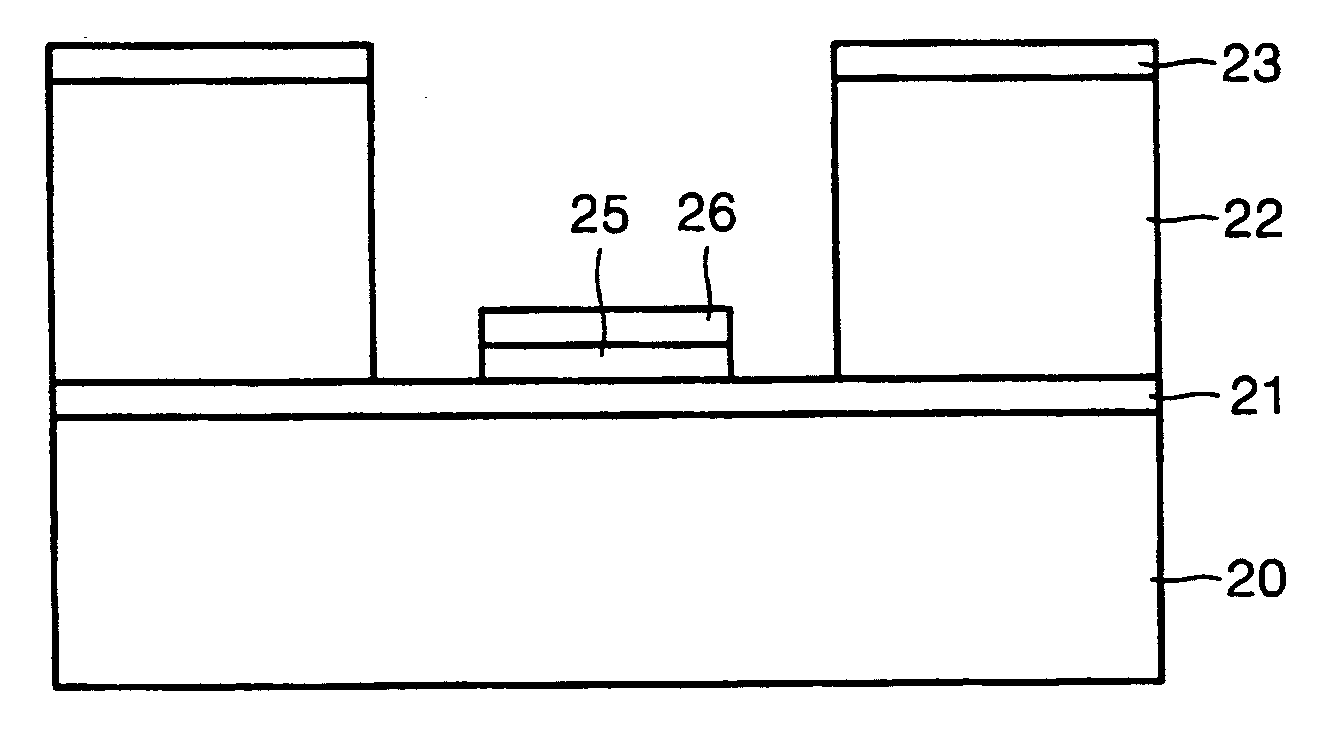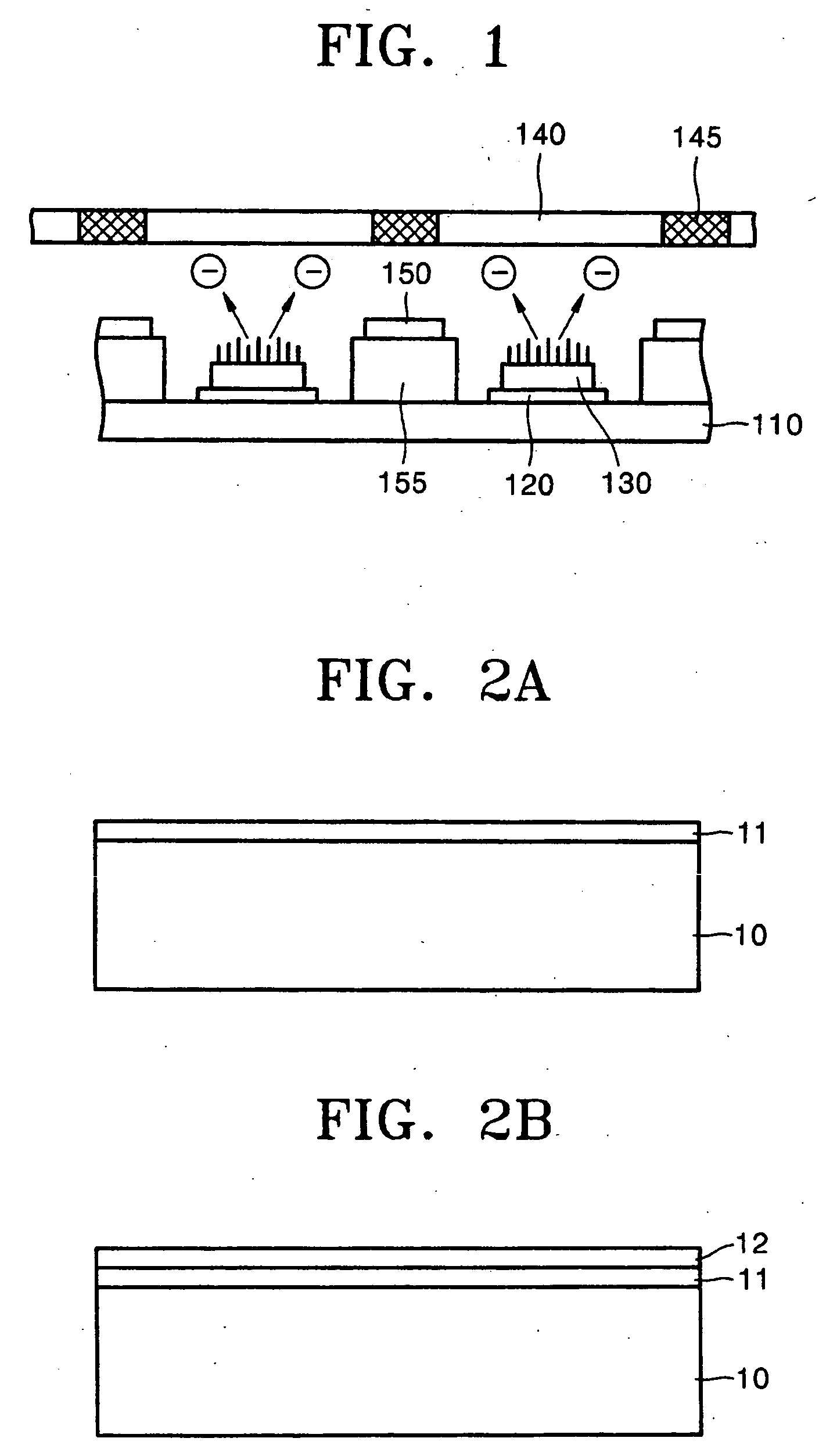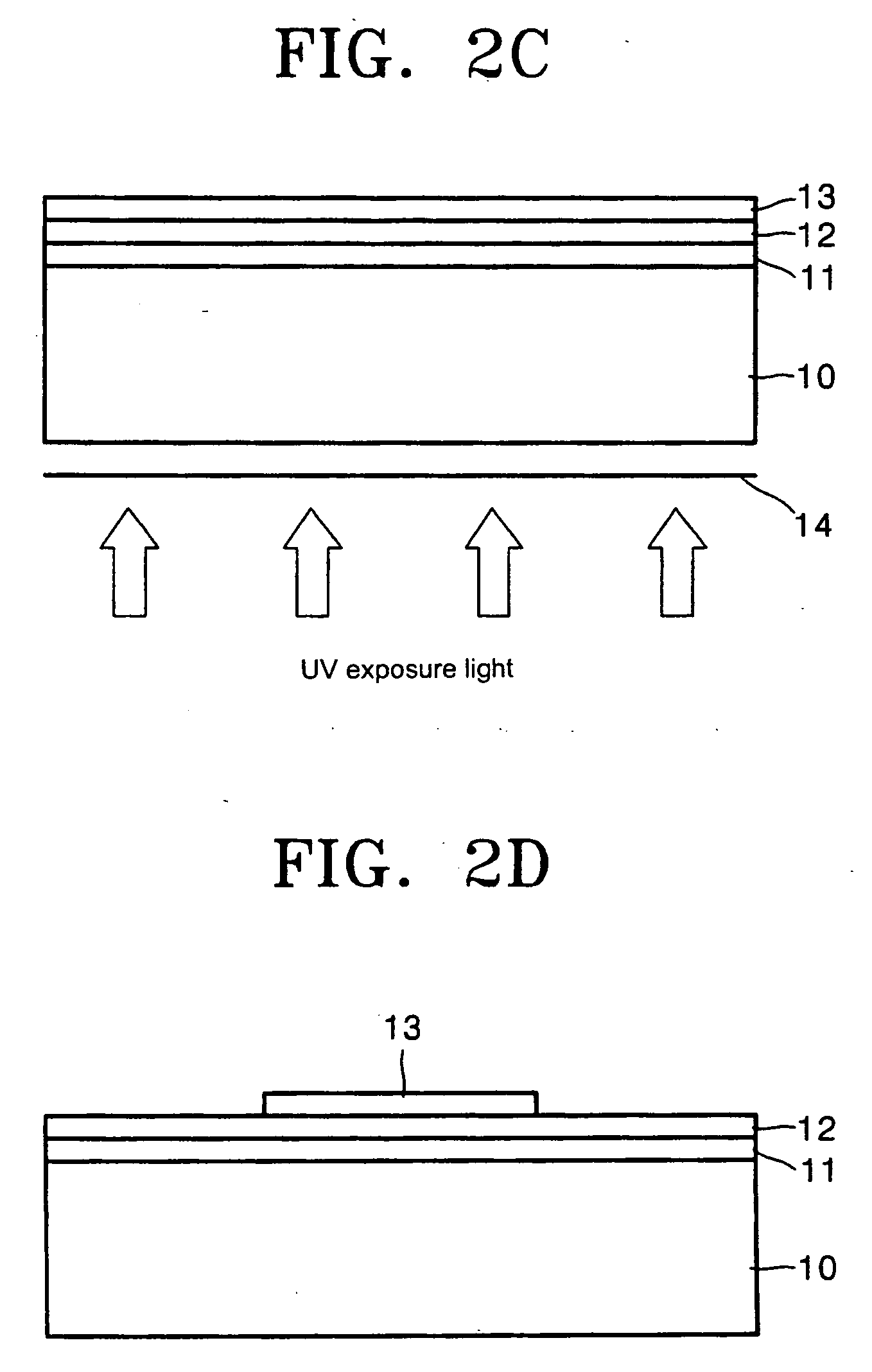Long life-time field emitter for field emission device and method for fabricating the same
a field emission device and long-life technology, which is applied in the manufacture of electric discharge tubes/lamps, discharge tubes with screens, discharge tubes luminescnet screens, etc., can solve the problems of non-uniform length, conductivity and resistance at the lower portions of cnts, and feds' cnt emitters have their own problems, etc., to achieve uniform current density, longer life-time, and higher brightness
- Summary
- Abstract
- Description
- Claims
- Application Information
AI Technical Summary
Benefits of technology
Problems solved by technology
Method used
Image
Examples
first embodiment
[0030] Turning now to FIGS. 2A through 2E, FIGS. 2A through 2E illustrate a method of making a diode-type FED according to the present invention. Referring to FIG. 2A, a transparent electrode 11 such as indium tin oxide (ITO) is first deposited over a transparent substrate 10 such as glass. Turning now to FIG. 2B, a resistive layer 12 is then formed on the transparent electrode 11. The resistive layer 12 is used to provide a uniform current to the CNT. Instead of using non-UV transmissive amorphous silicon (a-Si) for the resistive layer, an ultraviolet (UV) transmissive resistive material is used in the present invention to allow for a patterning process using back exposure. The resistive material has a resistivity greater than 10 Ω·m, and is preferably in the range of 102 Ω·m to 103 Ω·m, in order to obtain a sufficient voltage drop. Examples of the material satisfying these requirements for the resistive layer 12 include Cr2O3, Na2O2, SO2, CaO, Sc2O3, TiO2, VO2, V2O5, Mn3O4, Fe2O3,...
second embodiment
[0036] Turning now to FIGS. 3A through 3G, FIGS. 3A-3G are cross-sectional views illustrating a method of fabricating an emitter for a triode-type FED according to the present invention. Unlike the diode-type FED of FIGS. 2A through 2E, the triode-type FED includes a gate electrode.
[0037] Turning now to FIG. 3A, a transparent electrode 21 preferably made of ITO is deposited on a transparent substrate 20 preferably made of glass. Turning now to FIG. 3B, insulating layers 22 are formed at opposite ends of the top surface of the transparent electrode 21. A middle portion of the top surface of the transparent electrode 21 between the insulating layers 22 is reserved to form a resistive layer and an emitter layer during a subsequent processes. The insulating layers 22 are formed by applying a paste containing an insulating material such as SiO2 or PbO on the transparent electrode 21 and then solidifying the same through a sintering process. Subsequently, as illustrated in FIG. 3C, a cond...
PUM
 Login to View More
Login to View More Abstract
Description
Claims
Application Information
 Login to View More
Login to View More - R&D
- Intellectual Property
- Life Sciences
- Materials
- Tech Scout
- Unparalleled Data Quality
- Higher Quality Content
- 60% Fewer Hallucinations
Browse by: Latest US Patents, China's latest patents, Technical Efficacy Thesaurus, Application Domain, Technology Topic, Popular Technical Reports.
© 2025 PatSnap. All rights reserved.Legal|Privacy policy|Modern Slavery Act Transparency Statement|Sitemap|About US| Contact US: help@patsnap.com



